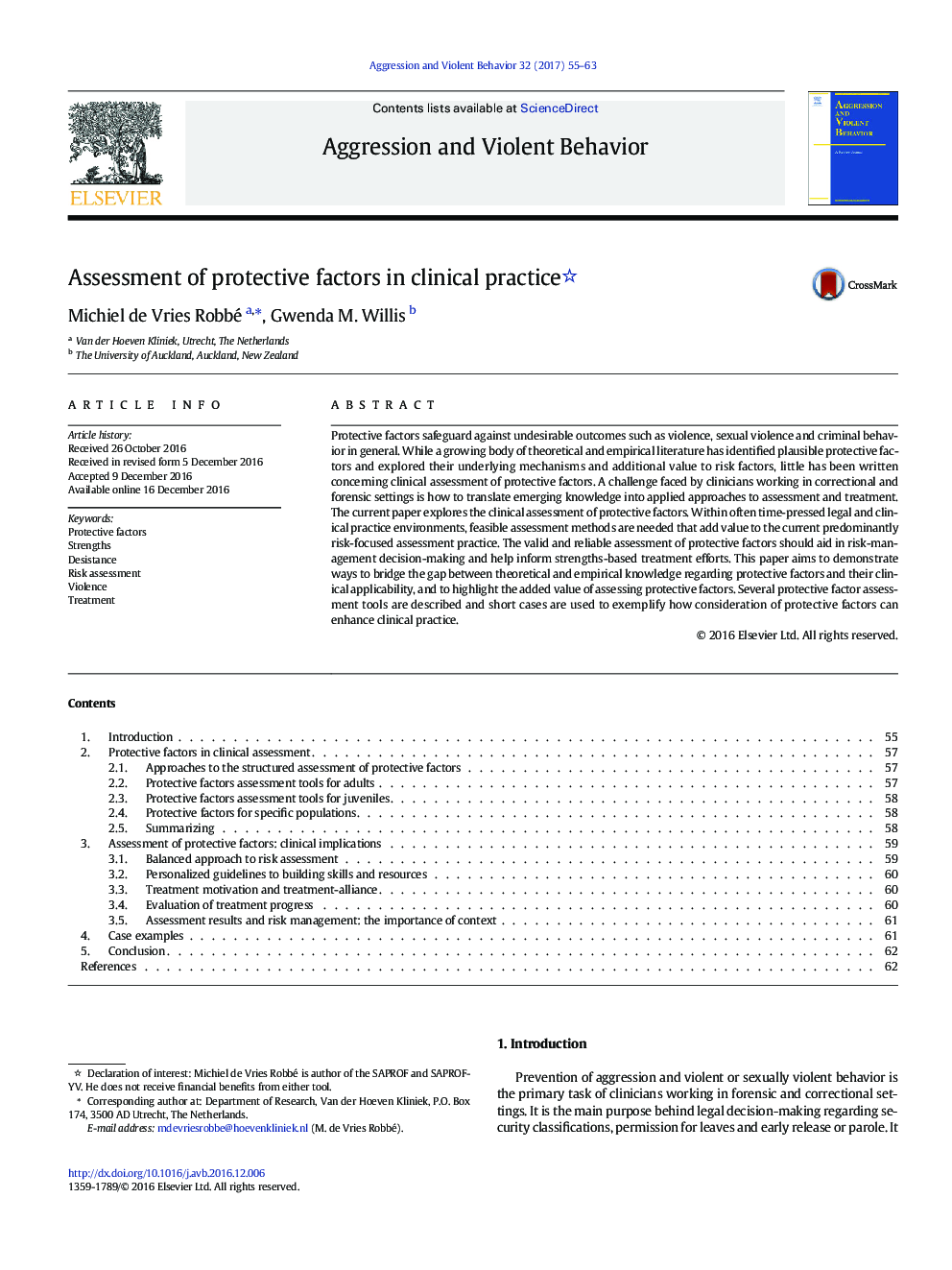| Article ID | Journal | Published Year | Pages | File Type |
|---|---|---|---|---|
| 4760084 | Aggression and Violent Behavior | 2017 | 9 Pages |
â¢Comprehensive risk assessment includes both risk factors and protective factors.â¢Assessment of protective factors aids risk-management and guides treatment efforts.â¢Protective factors can be resilience, social, community, treatment or context based.â¢The positive approach inspires hope, motivation for change and treatment alliance.â¢Protective factors fit well with RNR and GLM.
Protective factors safeguard against undesirable outcomes such as violence, sexual violence and criminal behavior in general. While a growing body of theoretical and empirical literature has identified plausible protective factors and explored their underlying mechanisms and additional value to risk factors, little has been written concerning clinical assessment of protective factors. A challenge faced by clinicians working in correctional and forensic settings is how to translate emerging knowledge into applied approaches to assessment and treatment. The current paper explores the clinical assessment of protective factors. Within often time-pressed legal and clinical practice environments, feasible assessment methods are needed that add value to the current predominantly risk-focused assessment practice. The valid and reliable assessment of protective factors should aid in risk-management decision-making and help inform strengths-based treatment efforts. This paper aims to demonstrate ways to bridge the gap between theoretical and empirical knowledge regarding protective factors and their clinical applicability, and to highlight the added value of assessing protective factors. Several protective factor assessment tools are described and short cases are used to exemplify how consideration of protective factors can enhance clinical practice.
